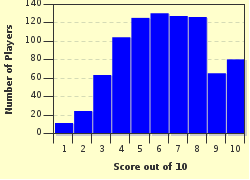Quiz Answer Key and Fun Facts
1. This 1960 instrumental was the top hit for the year, and was from a motion picture. Who was responsible for "Theme from a Summer Place"?
2. This next song was unusual in that it does have lyrics, but it was an instrumental version which made it to number one. Who took "Calcutta" to the top of the charts in early 1961?
3. Gene Chandler took this song to the top of the charts in early 1962. What member with a royal title was he singing about?
4. The duo of Ray Hildebrand and Jill Jackson had a number one hit in early 1963 with this love song. Of course, the song was recorded under a pseudonym. What name did they use?
5. The Beatles third straight number one dominated the charts in the spring of 1964. The song couldn't have done better if the boys had bought the airtime. (Clue?) What song was this?
6. "You've Lost That Lovin' Feelin'" was a number one tune for The Righteous Brothers in 1965. What distinction does this song have in the world of music?
7. Lou Christie gave us this weather phenomenon in 1966. Which one?
8. What was different about The Supremes 1967 number one hit "Love Is Here and Now You're Gone" as opposed to their prior recordings?
9. Which artist took the beautiful instrumental "Love Is Blue" to the peak position on the charts in 1968?
10. The success of "Everyday People" propelled this act into a performing slot at the original "Woodstock" in 1969. What group was this?
Source: Author
fredsixties
This quiz was reviewed by FunTrivia editor
Dalgleish before going online.
Any errors found in FunTrivia content are routinely corrected through our feedback system.

